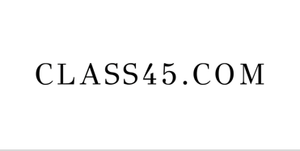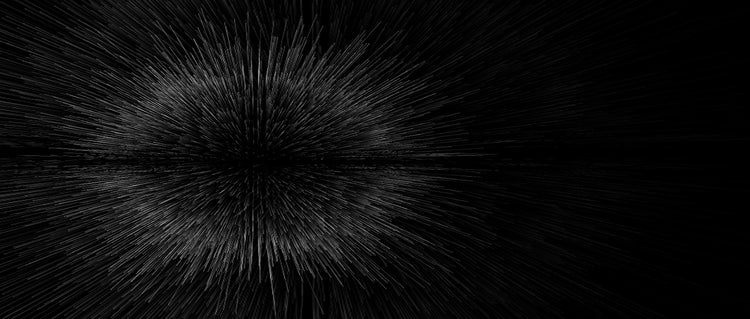PENDENCAY OF TRADEMARK CASES IN INDIA: CAUSES AND SOLUTIONS
- TRACING THE ROOT OF THE PROBLEM
India has seen a significant increase in trademark filings in the last few decades. This can be attributed to several factors, including the growing awareness of the importance of trademark registration, the increasing number of businesses and entrepreneurs in India, and the government's efforts to streamline the trademark registration process and make it more accessible to small and medium-sized enterprises. Additionally, the Indian government has also been promoting the "Make in India" campaign, which aims to encourage businesses to manufacture their products in India, which has also contributed to the increase in trademark filing.
Post Liberalization, in order to increase the protection and reduce delays in the registration of Trademarks and to attract investments from foreign entities, India set out to overhaul its trademark laws. The Trade and Merchandise Marks Act 1958 was repealed and the Trademarks Act 1999 was introduced. The new act brought about several significant changes, including the introduction of provisions relating to the protection and enforcement of service marks. Similarly, the Trade and Merchandise Marks Rules 1959 were repealed and replaced by the Trademarks Rules 2002. The new rules introduced important amendments aimed at curbing unnecessary delays and streamlining trademark proceedings. Most significantly, the new rules prescribed strict timelines for the completion of proceedings before the Registry of Trademarks.
These changes were widely accepted by the practitioners and Brand Owners but over a period of time, the practitioners and brand owners realized that the changes made by the government were merely words on paper. A general analysis shows that there is a huge backlog of Pending opposition cases as a result of the Trademark registry’s casual approach. This has been a huge cause of concern amongst the stakeholders.
- STATISTICS
According to the Indian Trademark Association registry, 242277 trademark oppositions are pending as of July 31, 2022.
This issue was also discussed in the matter of Dr. Reddys Laboratories Limited vs Controller General of Patents[1], where the Delhi High Court noted with some consternation that more than 2 lakh oppositions are stated to be pending and a substantial number of them are ripe for hearing in the office of the CGPDTM. Accordingly, it was directed to the officials of the CGPDTM Office to submit an entire report over the manner in which the CGPDTM intends to deal with the said pending oppositions.
The number of trade mark applications with third party opposition pending with the CGPDTM has gone up from 2,27,203 in May, 2022, to around 2,38,951 as on December 31, 2022. The highest number of cases are pending with the Delhi office of the CGPDTM, with around 89,775 opposition matters pending. Mumbai has 59,735 cases pending, while Chennai has 37,425 cases, Ahmedabad has 35,009 cases and Kolkata has 17,009 cases pending at the end of the year 2022.
The CGPDTM, in its status report to the High Court submitted, "In order to reduce the opposition pendency, the Office of CGPDTM is in the process of hiring 250 contractual opposition hearing officers exclusively to address the opposition pendency." Justice Prathiba M Singh taking the report into consideration, noted, "Considering the data submitted above, it appears that some progress has been made in increasing hearing in the opposition matters. Further, it has also been stated in the said status report that the CGPDTM is intending to hire 250 contractual opposition hearing officers." Post Dr. Reddys Laboratories Limited vs Controller General of Patents[2] the CGPDTM has been filing periodic updates with quarterly data on the actions it has taken to reduce the pendency and the data including the total number of cases pending during the time of filing status report.
- REASONS FOR PENDENCY OF CASES
One reason for the high number of pending oppositions is the increasing number of trademark applications being filed in India. As the country's economy continues to grow, more and more businesses are looking to protect their brand names and logos through trademark registration. This has led to a surge in the number of applications being filed, which in turn has created a backlog of cases for the ITO to process.
Another factor contributing to the high number of pending oppositions is the lengthy and complex process for resolving disputes. The opposition process can take several months or even years to complete, depending on the complexity of the case and the availability of resources. This can lead to delays and frustration for both trademark applicants and opponents.
Timelines for opposition procedure under the Trademarks Act and Rules:
|
Opposition procedures |
Prescribed timeline |
|
Filing of notice of opposition (Section 21(1), Rule 47(1)) |
Three months from publication of the application in the Trademarks Journal. Extendible by a further period of one month on request. |
|
Filing of counter-statement (Section 21(2), Rule 49) |
Two months from service of the notice of opposition upon the applicant. Deadline is non-extendible. |
|
Filing of evidence in support of opposition (Rule 50) |
Two months from service of the counter-statement upon the opponent. Extendible by a further period of one month on request. |
|
Filing of evidence in support of application (Rule 51) |
Two months from service of the evidence in support of opposition upon the applicant. Extendible by a further period of one month on request. |
|
Filing of evidence in reply (Rule 52) |
One month from service of the evidence in support of application upon the opponent. Extendible by a further period of one month on request. |
|
Filing further evidence (Rule 53) |
At any stage of the proceedings, on specific request by the applicant/opponent and subject to the registrar’s discretion |
|
Appointment of hearing on merits by registrar (Rule 56) |
Ordinarily within three months of completion of the evidence stage |
Another reason for the ever-growing number of pending oppositions in Trademarks is the significantly less workforce in the Trademark Registries in India. Over the past decade, there has been a substantial rise in trademark applications filed in India. As a matter of fact, in 2020 India overtook Japan in number of filed trade mark application and become the fifth largest trade mark filer worldwide. But the Trademark Registry has failed to cope up with this. Several vacancies are yet to be filled for the posts of Examiner and Registrar and this has resulted in an increased burden on the present workforce. This has led to slowing down of the process of trademark registration post pandemic.
- STEPS TAKE BY THE GOVERNMENT
- In the recent past, Indian Trademark Office has started to take up the matters pending with them for a long time due to one reason or another, by calling up applicants in special drives to clear the backlog in various departments of Office. The Office has introduced last year special drive to clear the backlog of opposition matters and asked parties to approach them in case they have entered into a settlement with the opposite party or one of the parties has shown its willingness to withdraw the case. The office has asked parties to submit the documents and update the records in relation to the opposition cases. Further the trademark office had also started a special drive to clear the backlog in post registration section by calling people for hearing in the matters of recordal of assignment, renewal etc, if the matter is pending for a long time. In the month of March 2016 Indian Trademark Office called the parties for a project in collaboration with Delhi State Legal Service Authority (DSLSA) for Mediation in cases pending before Registrar of Trade Marks, at the Trade Marks Registry Delhi. This project was introduced to accelerate the cases where matter is pending for a long time and parties are willing to settle the matter
- Despite various challenges pertaining to pendency of trademark cases, the Indian government is taking steps to address the backlog of pending oppositions. In 2019, the ITO announced plans to increase staffing and improve its technology infrastructure to speed up the processing of trademark applications and oppositions. Additionally, the Indian government has introduced new rules and regulations aimed at streamlining the opposition process and making it more efficient.
- The Office of the Controller General of Patents, Designs and Trademarks (CGPDTM) on August 01, 2022 issued a public notice on Special Drive for disposal of pending opposition and rectification cases of Trade Marks. This initiative was undertaken by India’s Trade Mark Office under the 'Azadi Ka Amrit Mahotsav event, which was being celebrated by the Indian Government to commemorate the 75th Anniversary of India’s Independence.
- The Trade Mark Registry (TMR) in recent years has taken steps towards modernization and improving efficiency, including the digitization of records, providing access to the e-register and e-filings, implementing an e-service for notices and orders, and hosting hearings via video conference amid the pandemic. Together, these initiatives have transformed the TMR and have led to slightly reduced backlogs in almost all departments.
- When asked by the High Court, the Office of the CGPDTM had informed the Court that 30 hearing officers have been engaged on a contractual basis, for hearing and disposal of opposition matters in the Trademark Registries across the country. In addition, the court said that 8 candidates have been promoted from the post of Senior Examiner to Assistant Registrar for looking into the disposal of the opposition matters. It was also pointed out by the CGPDTM that a total of approximately 50 hearing officers are in the process of being engaged for hearing of the pending opposition cases.
In a nutshell, the number of pending trademark oppositions in India is high due to the increasing number of trademark applications and the lengthy and complex process of resolving disputes. However, the Indian government is taking steps to address the issue by increasing staffing and improving technology infrastructure to speed up the process.
ROAD AHEAD
The registry needs to take proactive steps to clear its backlog and curb unnecessary delays. The sheer number of pending oppositions also gives some cause for concern as to the quality of the examination of new applications. The International Trademark Association has suggested a few changes that can be made in order to address the backlogs such as:
- Create a permanent link in the e-filing module where users can enter particulars of opposition/rectification proceedings which are withdrawn/not defended and where the adversary has consented to such withdrawal/abandonment with no order as to costs.
- Automatically dispose of matters where consent from the other party is available based on requests made using the proposed submission link.
- Take up disposal drives in chronological order and have them heard by officers across any branch of the TMR.
- Setting up an Alternative Dispute Resolution body specialising in Trademark matters to resolve the issue amicably without burdening the courts.
It appears that the registry is working its way out. The Office of the Controller General of Patents, Designs and Trade Marks (CGPDTM), had promised the Delhi High Court to settle around 200,000 applications that have ballooned since December 2020 on a priority basis by 2025.
[1] MANU/DEOR/172461/2022
Dr. Reddys Laboratories Limited vs. Controller General Of Patents Designs And Trademarks (20.10.2022 - DEOR) : MANU/DEOR/172461/2022
[2] Ibid.

